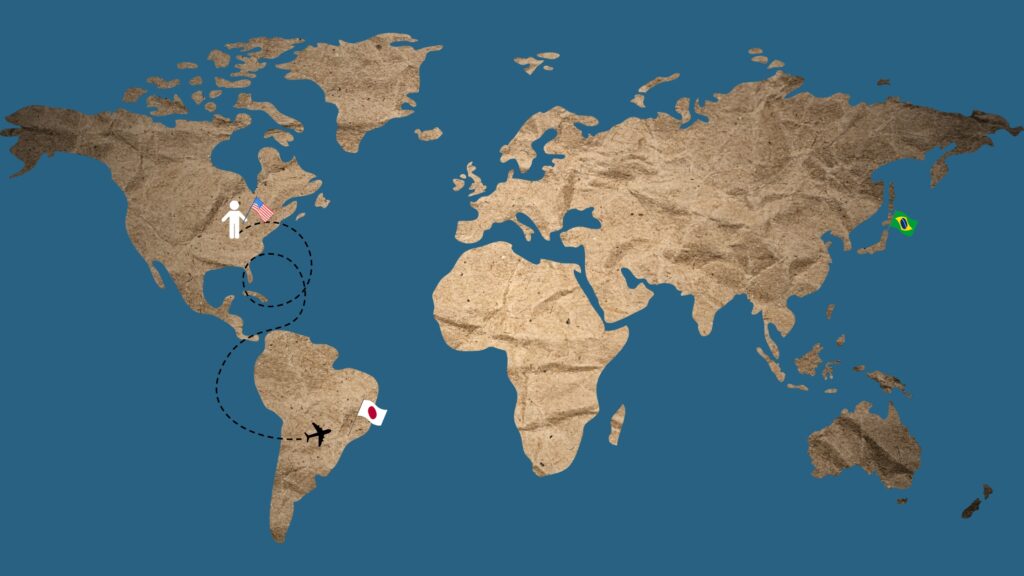Learning a new language often reveals unexpected connections that bridge cultures and continents. In my own experience, the journey from Japanese to Portuguese has been filled with surprising discoveries. These Japanese and Portuguese language connections go beyond vocabulary, uncovering fascinating cultural and historical ties that have shaped each language in unique ways.
Discovering Practical Benefits of Language Learning
Language learning has always intrigued me, and my journey has taken some exciting twists and turns, connecting dots I never imagined would align. A few years ago, when DuoLingo first released Japanese as an option, I leaped at the opportunity. I’d always wanted to learn Japanese, so in 2017, I began my adventure. In just six months, I could order food and even compliment dishes at a Japanese restaurant in Los Angeles. These small victories fueled my motivation to dive even deeper.
Diving into Japanese: My First Language Adventure
I continued studying Japanese for nearly two years, building on what I’d learned and immersing myself in the language and culture as best I could from home. Then, in 2019, life took an unexpected turn. I moved to Nashville, Tennessee, and found myself in a new environment with fresh challenges. However, this change also led me to a surprising new path in language learning.
A New Chapter Begins: Discovering Brazilian Portuguese
In 2020, I met my future wife, who happened to be from Brazil. As our relationship grew, so did my fascination with her language, Brazilian Portuguese. By 2021, I made the big decision to pivot from Japanese to Portuguese. Learning Portuguese felt like starting from scratch, yet I was excited to explore a whole new linguistic and cultural landscape.
At first, I studied casually, switching between various apps and online resources. Then, with perfect timing, my wife signed up for a DuoLingo family plan. This allowed her family to learn English while I focused on Portuguese. Soon, language learning became a shared family activity, bringing us all closer together and adding an element of fun to the process.
Surprising Cultural Overlaps Between Japanese and Portuguese
Interestingly, as I progressed in Portuguese, I began noticing some intriguing overlaps with Japanese—especially in culture and certain language elements. It turns out these connections weren’t just coincidences.
In 2022, through Lunchclub, a networking platform, I met someone who had worked in Japan for Sony. He shared that in Japan, shop-floor signage was often in both Japanese and Portuguese. This caught my attention, so I asked why. He explained that Brazil hosts the largest Japanese population outside Japan due to major migrations in the early 20th century, which established a vibrant Japanese community in Brazil, particularly in São Paulo.
Exploring Historical Connections: Japan and Portugal’s Shared Past
My curiosity grew, and I started researching the historical ties between Japan and Portugal. To my surprise, the connection dates back to the 16th century, when Portugal became the first European country to make contact with Japan. The Portuguese didn’t just bring goods and customs; they also left linguistic traces that endure today.
For instance, Japanese adopted several Portuguese words from this period, like pan (bread) and botão (button). Additionally, both languages share the conversational marker “ne?”—a small but interesting similarity that means “right?” or “isn’t it?” in conversation. Discovering these shared features fascinated me even more, underscoring how language bridges cultures across continents and centuries.
Reflecting on the Deeper Connections in Language Learning
The historical and linguistic connections between Japanese and Portuguese are certainly unique, and I feel incredibly lucky to have stumbled upon them through my language journey. Language learning, I’ve realized, is about more than just vocabulary and grammar. It’s about uncovering histories, making connections, and growing in unexpected ways.
As I continue my studies with my Portuguese instructor, I’m excited to see what other discoveries lie ahead—both in the language and in the world of connections it opens up. Whether I’m learning Japanese, Portuguese, or another language down the line, I know that every new word brings a story that connects us across cultures and continents.
